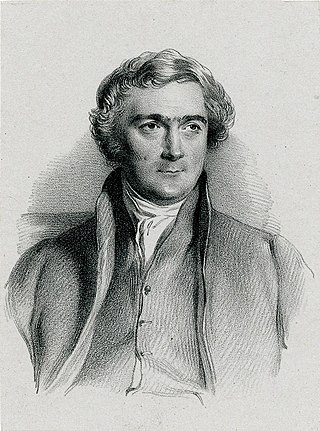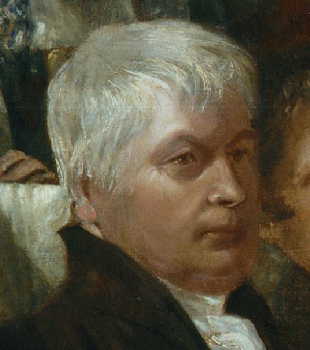
Anna Sewell was an English novelist who wrote the 1877 novel Black Beauty, her only published work. It is considered one of the top ten best-selling novels for children, although the author intended it for adults. Sewell died only five months after the publication of Black Beauty, but long enough to see her only novel become a success.

Elizabeth Fry, sometimes referred to as Betsy Fry, was an English prison reformer, social reformer, philanthropist and Quaker. Fry was a major driving force behind new legislation to improve the treatment of prisoners, especially female inmates, and as such has been called the "Angel of Prisons". She was instrumental in the 1823 Gaols Act which mandated sex-segregation of prisons and female warders for female inmates to protect them from sexual exploitation. Fry kept extensive diaries, in which she wrote explicitly of the need to protect female prisoners from rape and sexual exploitation.

Amelia Opie was an English author who published numerous novels in the Romantic period up to 1828. A Whig supporter and Bluestocking, Opie was also a leading abolitionist in Norwich, England. Hers was the first of 187,000 names presented to the British Parliament on a petition from women to stop slavery.

Joseph Pease was a British proponent and supporter of the Stockton and Darlington Railway Company, one of first public railway systems in the world, and was the first Quaker permitted to take his seat in Parliament.

Joseph John Gurney was a banker in Norwich, England and a member of the Gurney family of that city. He became an evangelical minister of the Religious Society of Friends (Quakers), whose views and actions led, ultimately, to a schism among American Quakers.

Sir Thomas Fowell Buxton, 1st Baronet Buxton of Belfield and Runton, was an English Member of Parliament, brewer, abolitionist and social reformer. He married Hannah Gurney, whose sister became Elizabeth Fry, and became a great friend of her father Joseph Gurney and the extended Gurney family.

William Forster was a preacher, Quaker elder and a fervent abolitionist. He was an early member of the British and Foreign Anti-Slavery Society in 1839. It was William and Stephen Grellet who introduced Elizabeth Fry to her life's work with prisons, but it was William's brother, Josiah, who accompanied Fry on her tour and inspection of prisons in France.
The high sheriff is the oldest secular office under the Crown and is appointed annually by the Crown. The High Sheriff of Norfolk was originally the principal law enforcement officer in Norfolk and presided at the assizes and other important county meetings. Most of the responsibilities associated with the post have been transferred elsewhere or are now defunct, so that its functions are now largely ceremonial. There was a single high sheriff serving the two counties of Norfolk and Suffolk until 1576.

Rev. Barclay Fowell Buxton was an English evangelical Christian missionary in Japan.

Samuel Gurney was an English banker and philanthropist from the Gurney family of Norwich. He should not be confused with his second son, Samuel (1816–1882), also described as banker and philanthropist, and a Member of Parliament.

Cromer and District Hospital opened in 1932 in the suburb of Suffield Park in the town of Cromer within the English county of Norfolk. The hospital is run by the Norfolk and Norwich University Hospitals NHS Foundation Trust and provides an important range of acute consultant and nurse-led services to the residents of the district of North Norfolk.

Samuel Hoare Jr was a wealthy British Quaker banker and abolitionist born in Stoke Newington, then to the north of London in the county of Middlesex. From 1790, he lived at Heath House on Hampstead Heath. He was one of the twelve founding members of the Society for the Abolition of the Slave Trade.
Verily Anderson was a British author, best known for writing the screenplay of the 1960 film No Kidding, based on her 1958 book Beware of Children, for writing Brownie books and writing genealogical books about the Gurney, Barclay and Buxton families.

Earlham Hall is a country house in Norfolk, England. It is located just to the west of the city of Norwich, on Earlham Road, on the outskirts of the village of Earlham. For generations it was the home of the Gurney family. The Gurneys were known as bankers and social activists; prison reformer Elizabeth Fry grew up at Earlham Hall. When the University of East Anglia was founded in 1963, the building became its administrative centre, and it now serves as the law school.

Hudson Gurney was an English antiquary and verse-writer, also known as a politician. He was a member of the Gurney family.

Louisa Gurney Hoare was an English diarist and writer on education, and a member of the Gurney family. She was concerned particularly with standards of education.
The Gurneys were an influential family of English Quakers, who had a major part in the development of Norwich, England. They established Gurney's Bank in 1770, which merged into Barclays Bank in 1896. They established successful breweries. A number of family members were abolitionists. Members of the family still live in the United Kingdom.

Hoveton Hall in the parish of Hoveton in Norfolk is a Regency-style country house made of gault brick with a slate roof. It was built between 1809 and 1812, on or near the site of the previous ancient manor house of the same name, by Mrs Christabell Burroughes (1764-1843), daughter and heiress of Henry Negus (1734-1807) of Hoveton Hall, an attorney, and wife of James Burkin Burroughes (1760-1803) of Burlingham Hall, Norfolk. The architect was Humphry Repton. It is a well-preserved historic house of significance on the English Heritage Register. The Negus family had been seated at Hoveton Hall for several generations. The surrounding estate today consists of 120 acres of gardens and parkland and 450 acres of arable land as well as picturesque woodland. The gardens are open to the public during part of the year and there are facilities available for accommodation and special events including weddings.

Priscilla Buxton was a British abolitionist. She was co-secretary of the London Female Anti-Slavery Society. In 1833 a petition of 187,000 women's signatures were presented to parliament to end slavery. The first two names were Amelia Opie and Priscilla Buxton.
Sarah-Maria Buxton was a social reformer and abolitionist, long-term companion of Anna Gurney, scholar and philanthropist.
















